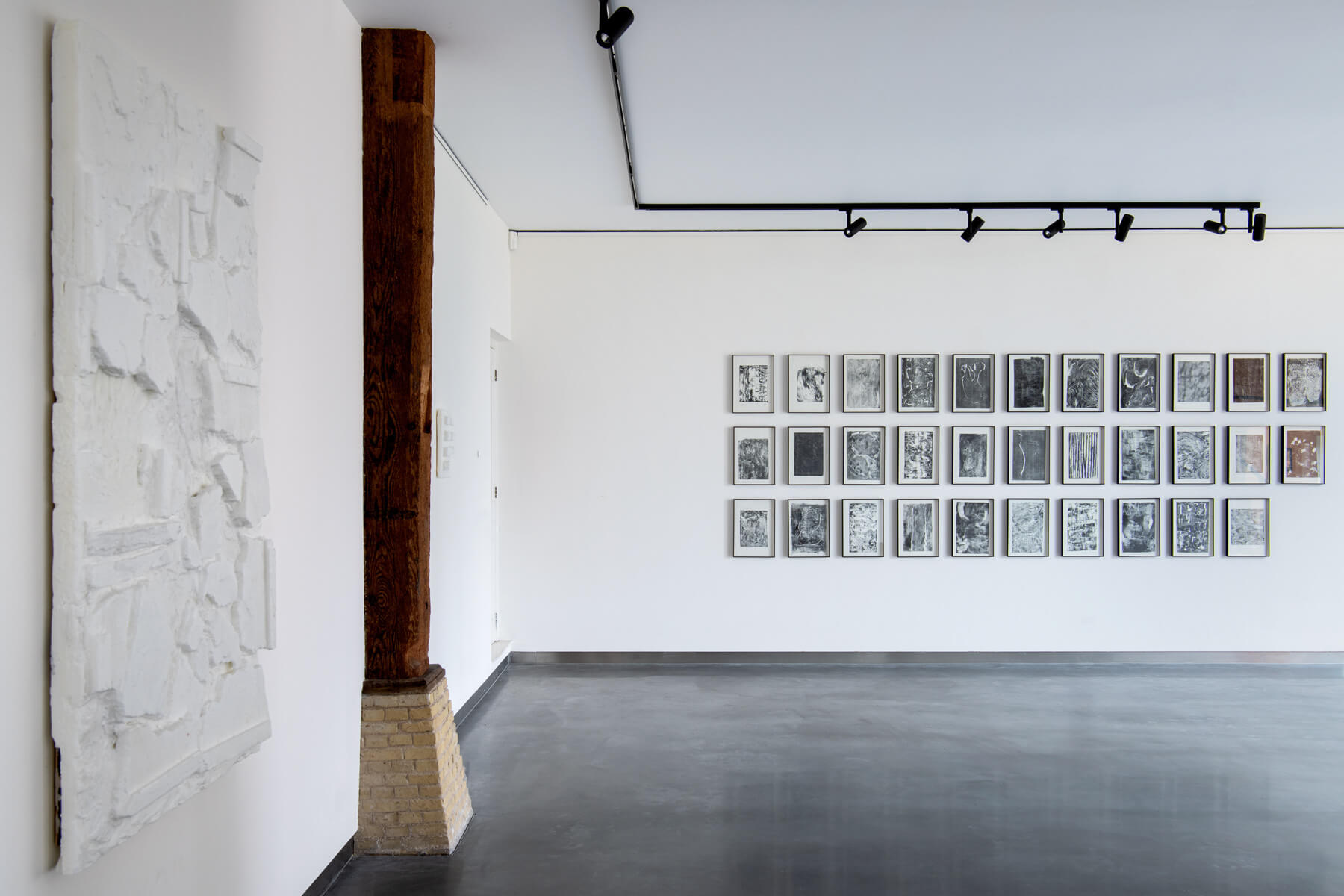


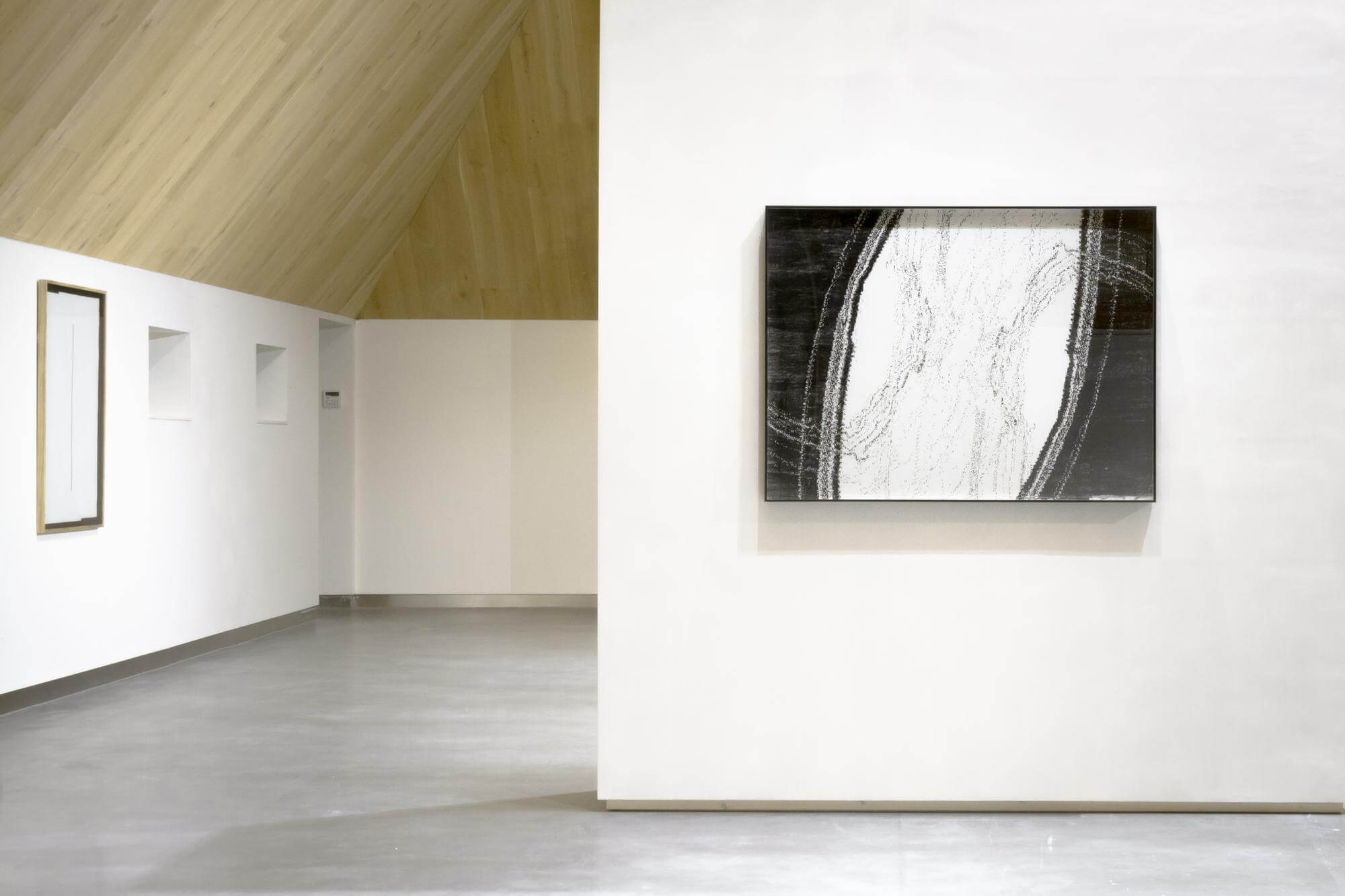
Broken Tools
6 NOV. 2021—5 FEB. 2022
Solo exhibition at Nuweland Gallery, The Netherlands

Tragedy of the Rainbow Warriors (after Jannis Kounellis and Francois Pienaar) (2021)
Lay’s chip packets, coat stand, Springbok supporters jerseys, shelf, oil lamp
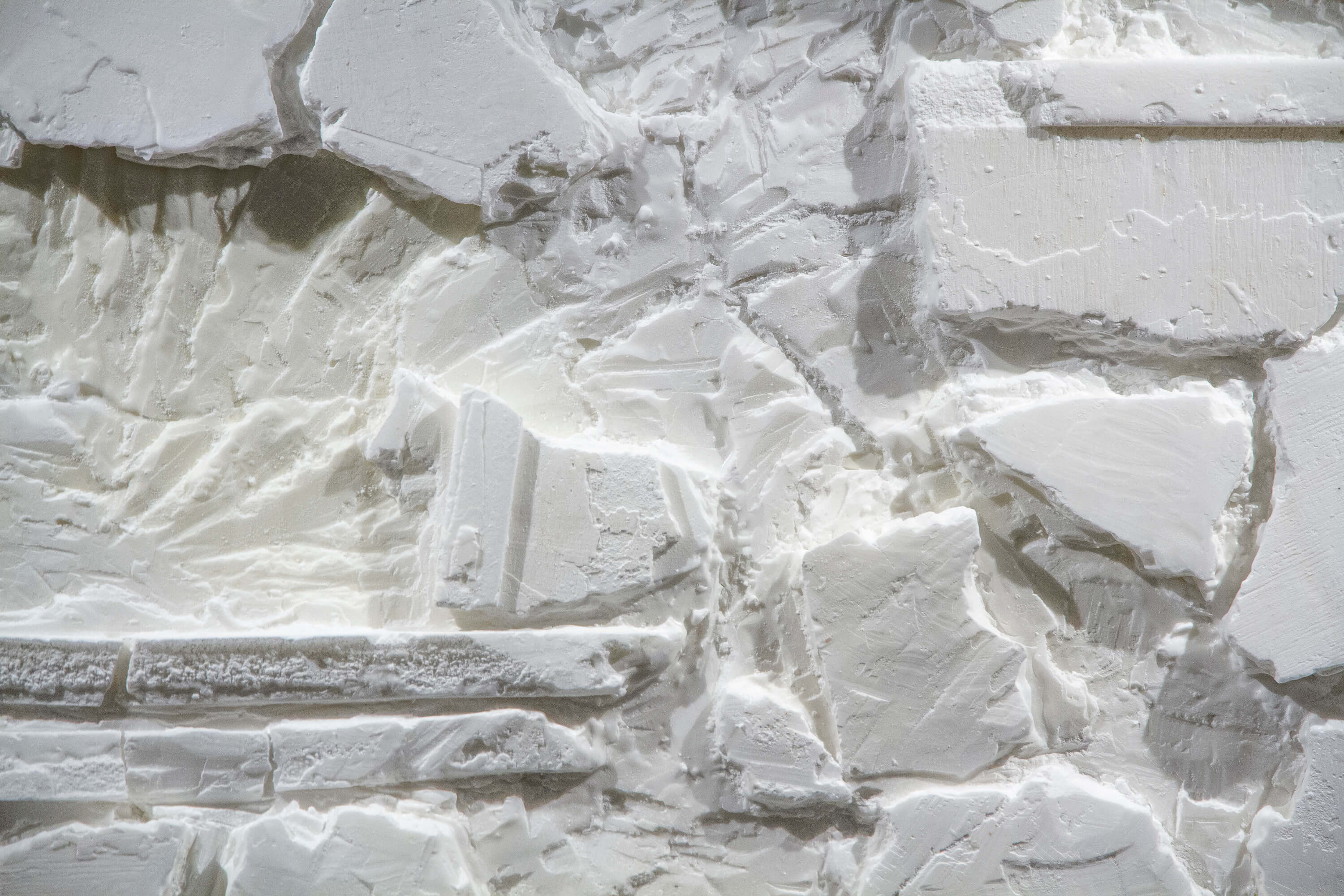

Seen but Not Heard (210925)
Cow fat


Seen but Not Heard (210912)
Cow fat
Cow fat
To Bear Witness to Life (210912)
Cow fat
Cow fat
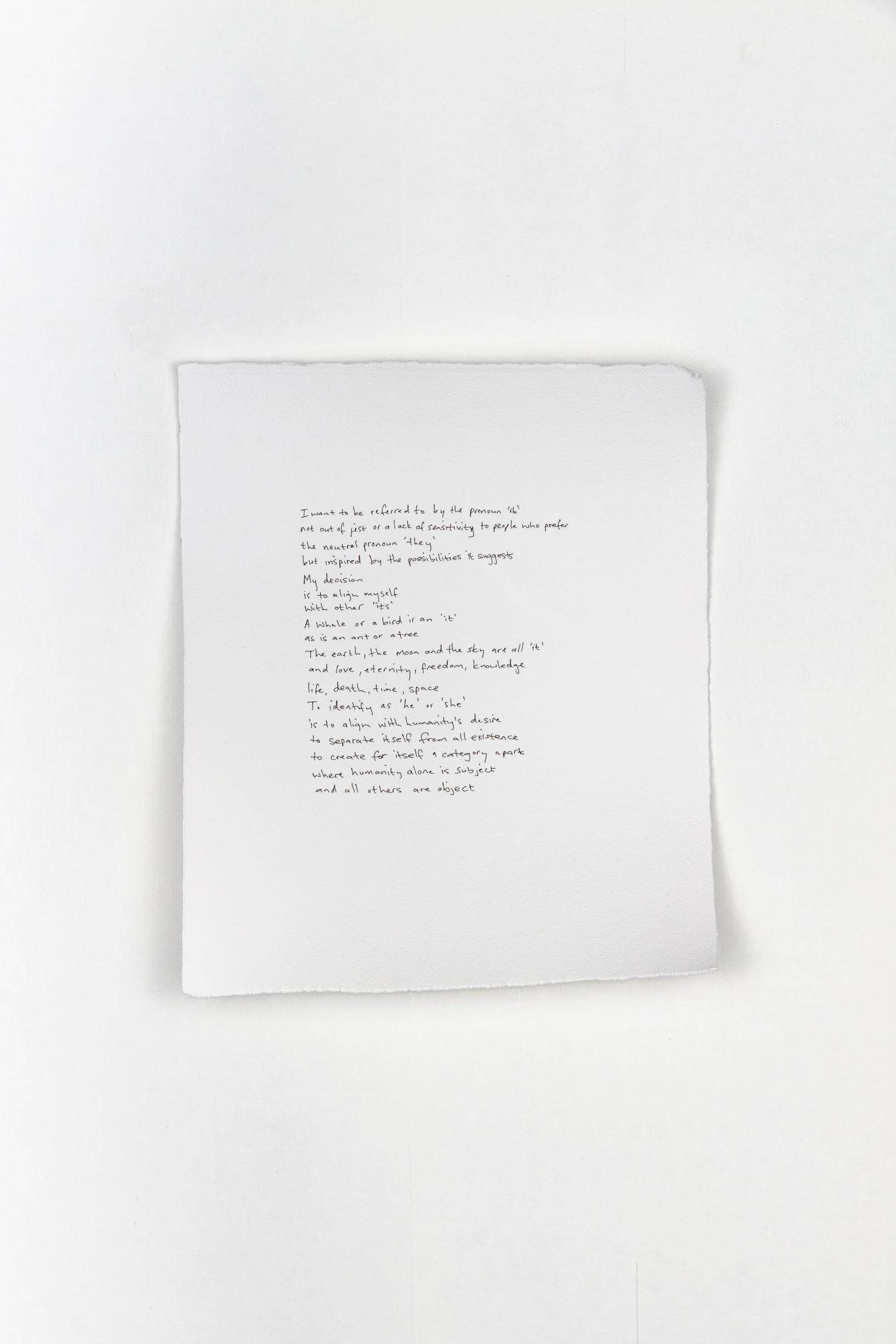

What if I were to become forgetful
and started asking stupid questions
like why water doesn’t behave like rock
and why beds are raised off of the ground
or what makes videos more entertaining
than reflections on a pond?
The most crucial things
I would have forgotten
is what to take for granted
and what is not an acceptable question
What if there is no ‘nature’, only ‘history’?
The world we see as natural
simply evidence of a way life has been
for us to learn from or replace
Cultures bear scars in the same way bodies do
Incidents crystallise in our attitudes
and are passed on as values
and started asking stupid questions
like why water doesn’t behave like rock
and why beds are raised off of the ground
or what makes videos more entertaining
than reflections on a pond?
The most crucial things
I would have forgotten
is what to take for granted
and what is not an acceptable question
What if there is no ‘nature’, only ‘history’?
The world we see as natural
simply evidence of a way life has been
for us to learn from or replace
Cultures bear scars in the same way bodies do
Incidents crystallise in our attitudes
and are passed on as values


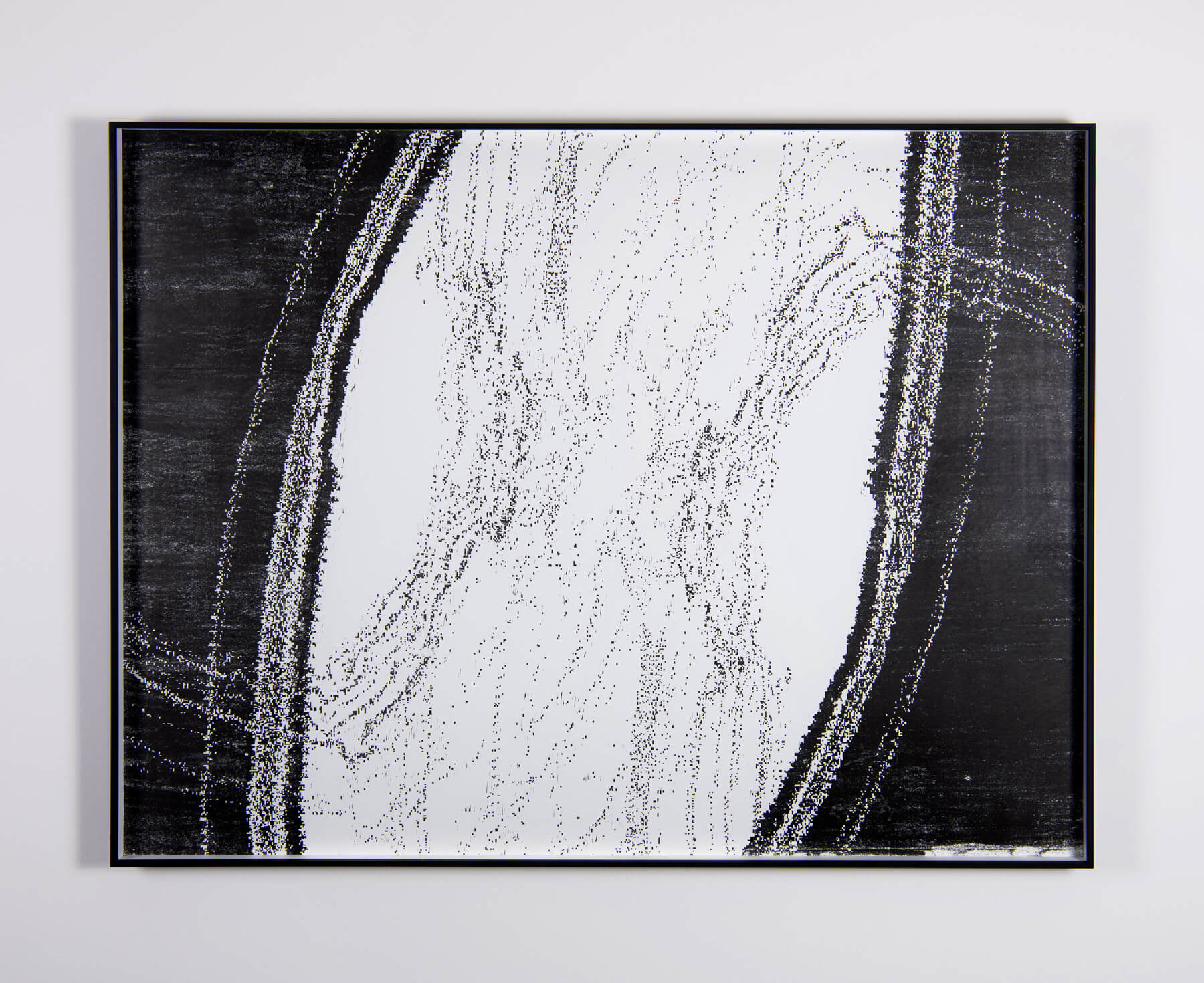
Relief on Hospital Floor
Ink on vinyl flooring
Relief on Hospital Floor with Serving Spoon
Relief print on paper
Ink on vinyl flooring
Relief on Hospital Floor with Serving Spoon
Relief print on paper
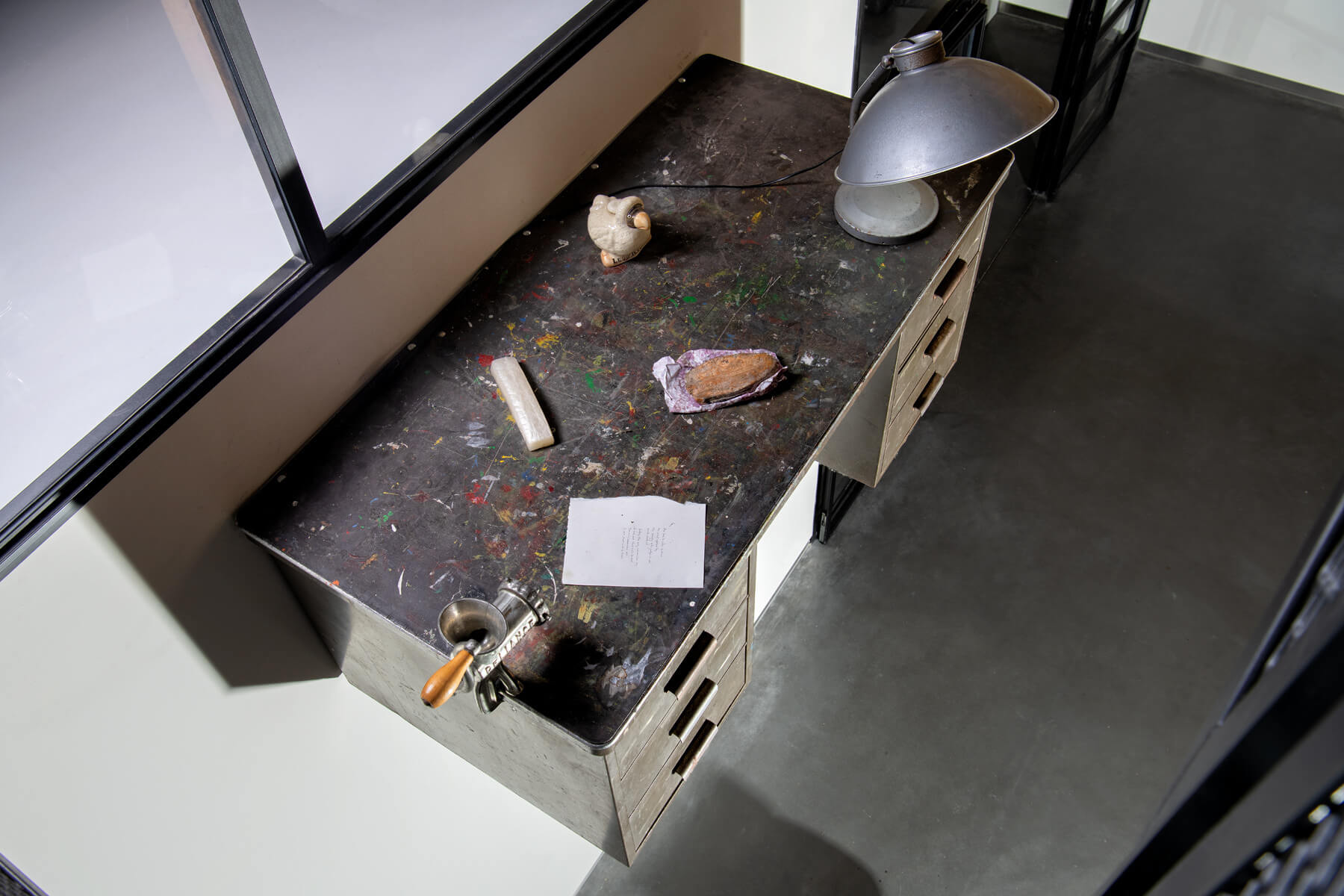

Self-portrait under the Lamp: 2021
Desk, chair, meat grinder, notebook, ceramic dodo, pencil, broken laptop, mammoth tooth, box tape, lamp
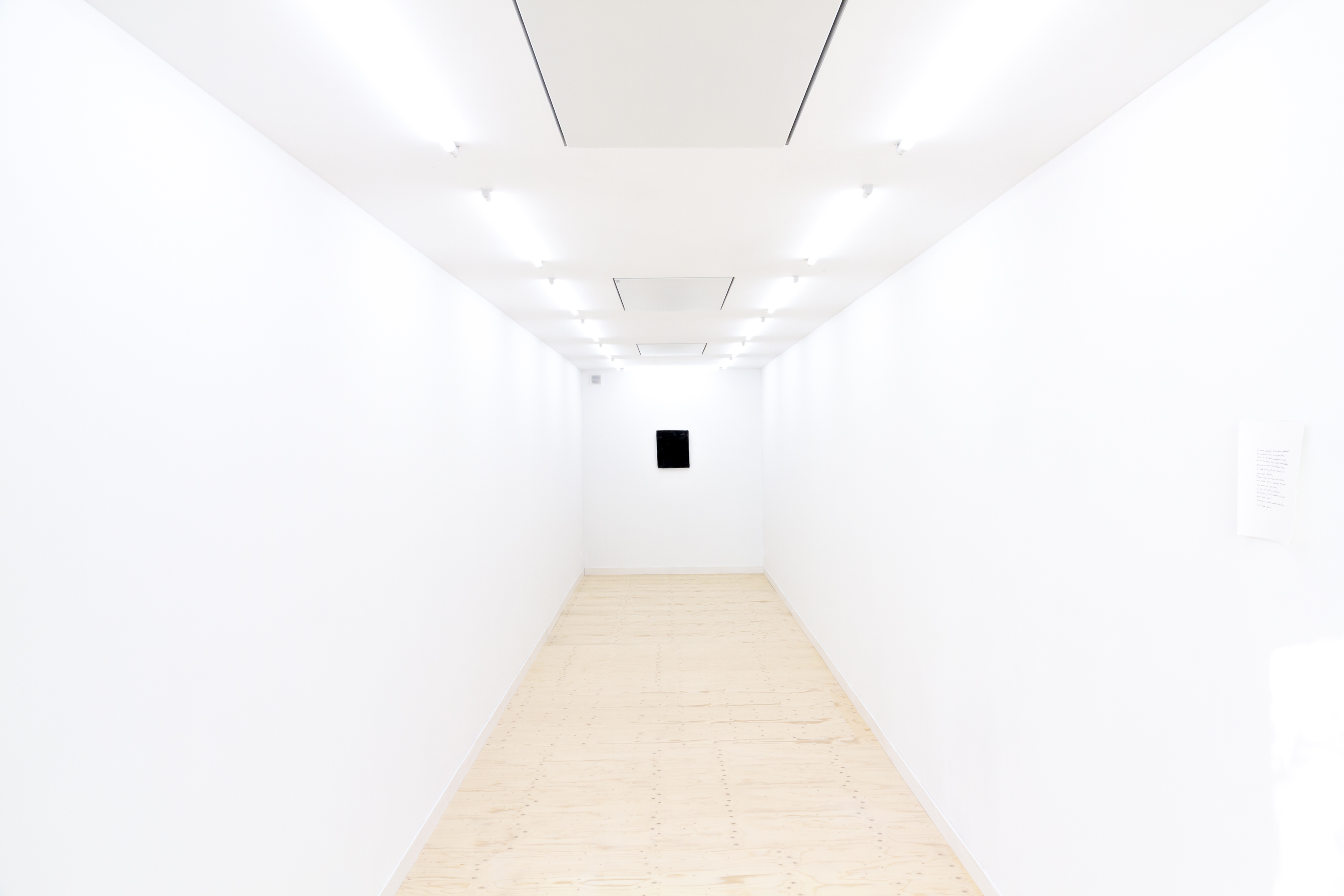


Ends and Beginnings (After the Veldfire that Destroyed a Library: Devil’s Peak 210418)
Cow fat and veldfire ash
I Must Apologise
Ink on paper
Cow fat and veldfire ash
I Must Apologise
Ink on paper
On Gesture and Risk in Dale Lawrence’s Broken Tools
by Sean O’Toole
‘Consistency is a dogma that has to be transgressed,’ wrote the Italian critic and curator Germano Celant in 1967. A half century later, partly inspired by the ideas of Jannis Kounellis, a key artist in Celant’s conception of Arte Povera, Dale Lawrence cast his lot on the side of the artist-alchemists who embraced inconsistency and self-discovery. For his 2019 exhibition Further Prototypes Lawrence turned his back on printmaking, a medium he loves and still habitually works with, and opted instead to work with gestures. A gesture intuits an action. He sawed the legs off a wooden side chair, vandalised a photocopier and ripped off a much-admired artwork. Many of Lawrence’s gestures exhibited at Smith Studio, a now-defunct gallery in central Cape Town, were linked to physical outcomes, to producing demonstrable objects, some of which have travelled to Europe for his exhibition Broken Tools.
An art object is possibility materialised. Over the last few years, Lawrence has increasingly become interested in other ways of making, ways not singularly bound to the requirement of materialising or making things. One experiment included in Further Prototypes was a work titled The Pastoral Concert (2019). It comprised a smashed black ceramic vase, whose innards – a mix of paper clips, rubber bands, coins and batteries – lay strewn next to a large unfinished painting, Hercules Wrestling with Death for the Large Bathers (2019). The painting featured a pencil cartoon that combined motifs from two similar works by Frederic Lord Leighton and Paul Cézanne. Lawrence added thick impasto marks to the painting throughout the duration of his exhibition. Process, not completion, was being enacted.
Absence is a gesture too. Every morning during the six-week run of Further Prototypes, Lawrence would bathe in a freestanding bathtub installed in the gallery. This ritualistic action, undertaken before the gallery opened to the public, was a benedictory act of devotion and persistence. The work also welcomed pause and contemplation. The view from the bathtub encompassed a broad sweep of the gallery, which Lawrence had populated with works that materialised his interest in the interconnectedness of art and labour, process and resolution. He didn’t spend too long in the cold and turbid bathwater. When he was done, Lawrence stepped onto a mat, dried himself, dressed and dived headlong into his workday. The only semblance of the artist’s involvement in Seen and Not Seen(2019) was a pair of footmarks on the white bathmat.
Broken Tools does not include the bath performance, nor does it feature the ruined vase. Broken Toolspresents a selective survey of works produced over the past six years. Alongside new works made in the last two years, the exhibition gathers a number of the works originally shown in South Africa between 2016 and 2019. This was a period of radical transformation for the artist. The line, a primal and unruly mark that forms the basis of Lawrence’s ambitious works on paper, was increasingly held in abeyance, made to yield to other possibilities. Some of these older works are shown unchanged, including Keeping up Appearance (2017), an elegant linocut featuring a single vertical line printed in black ink across a torn sheet of paper. However, a few older works have been updated or reimagined.
Lawrence implicitly disagrees with artist Sol LeWitt, the grand poobah of conceptualism, who argued that it is difficult to ‘bungle a good idea’. Good ideas, Lawrence believes, can be made better – when the opportunity arises. His 2019 installation Tragedy of the Rainbow Warriors (after Jannis Kounellis and Francois Pienaar) is a prime example. A key work in Lawrence’s evolving corpus, this multi-part installation is an allusive deliberation on notions of social cohesion, reconciliation and commodification in post-apartheid South Africa. It also reveals Lawrence’s willingness to hack art history in a bid to overcome his own history as a maker.
The title of Tragedy of the Rainbow Warriors derives, in part, from a newspaper report on South Africa’s victory in the 1995 Rugby World Cup. The article was accompanied by a photograph of then-president Nelson Mandela handing the winner’s trophy to Francois Pienaar, captain of the South African rugby team. Pienaar would parlay his successes on the sports field in the boardroom, notably by serving as the brand ambassador for American chip brand Lay’s when it entered the South African market in the late 1990s. The packaging for this salty snack is central to Lawrence’s installation.
When it was first presented in Cape Town in 2019, Tragedy of the Rainbow Warriors featured a wall covered with shiny squares of silver polymer used to package Lay’s lightly salted crisps. Lawrence additionally installed a floating shelf on which he placed a mobile phone, its white umbilical plugged into a nearby electricity socket. Displayed next to his wall was a side table bearing a brass bowl filled with Lay’s crisps. For its display in Holland in 2021, Lawrence has jettisoned the side table and bowl of chips, replacing them with a coat stand supporting two green jerseys worn by supporters of the national rugby team, each hardened in resin. Additionally, the phone has been replaced with a paraffin lamp.
In its revised form, Lawrence’s cryptic installation now more closely resembles Tragedia civile (1975), a celebrated piece of installation art conceived by Jannis Kounellis. First exhibited in Naples in 1975 and later included by curator Rudi Fuchs in his Documenta 7 (1982), Tragedia civile comprises a bentwood hatrack bearing a coat and hat placed in front of a wall covered with tessellated squares of gold leaf. An oil lamp hazily lights the enigmatic scene. A number of writers, including Celant, Thomas McEvilley and Philip Lariat-Smith, have delicately parsed Tragedia civile, making its ambitions and meanings explicable – without introducing garish electric light, the default mode of much art criticism.
Lawrence has also written about Tragedia civile, albeit mostly in relation to his own work. He describes Tragedy of the Rainbow Warriors as a ‘rendition’ of the Kounellis original. I prefer the literary term quotation. Quotes are more than acts of repetition: they are partisan feats, declarations of allegiances; they are by their nature also expeditionary, invitations to journey into the thoughts and lives hinted at in the borrowed phrase or gesture. I want to briefly do that here.
Both McEvilley and Larratt-Smith agree that Tragedia civile marks Kounellis’s attempts to braid together the ‘critical materialism’ of Marcel Duchamp with the ‘non-objective spirituality’ of Kasimir Malevich. Larratt-Smith continues:
From Duchamp he took the idea that anything could become a work of art. Yet Kounellis’s readymades are not intended as provocations: he is sincere where Duchamp is ironic. With Malevich he shares a belief in the possibility of another order, and a faith in the potentialities of humanity that verges on the utopian.
To a degree, this holds true of Lawrence too. He is sincere rather than ironic in his ambitions as an artist drawn to gestures as much as made objects. He also harbours faith in the possibilities of humanity, even though he knows, has in fact seen, that the moments of collective elation that bring together a fractured nation are evanescent, that his home country’s problems of division are deep, will resurface, that the flickering oil lamp of the national power utility will run dry. And yet, like Kounellis, an atheist who placed his faith in culture, in a wall gesturing to the golden age of Byzantine and Sienese art, Lawrence too places his faith in art, in its making as well as its showing.
The need to exhibit, writes Hisham Matar in his reverential travelogue A Month in Siena (2019), ‘is an act against oblivion, a resistance to emptiness,’ a declaration that ‘art and death exist at opposite ends of the spectrum’. When I visited Lawrence at his home and studio in False Bay to view his new monotypes and sculptural works made with animal fat, he briefly showed me the fledgling Proteas he had cultivated from seeds harvested on Devil’s Peak following a catastrophic fire in April 2021. Fragile cotyledons poked out the earth. Oblivion was being refused. The same could be said of Lawrence’s new work Ends and Beginnings (2021), a rectangular fat piece made from beef tallow and stearin combined by black pigment made from charcoal found on the burnt slopes of Table Mountain.
Lawrence’s fat sculptures extend on two earlier works from 2019 featured in Further Prototypes. Both featured figural scenes, mash-ups of paintings by Rembrandt and Caravaggio in the style of his site-constructed painting Hercules Wrestling with Death for the Large Bathers. The new fat works feature no obvious visual referent. Colour, surface, texture and shape are primary. In this respect they exhibit formal continuities with some of Lawrence’s earlier works on paper, especially his 2017 linocuts Another Helping and Hand-me-downs. Printmaking was foundational to Lawrence’s early practice and featured prominently in his first two solo exhibitions, Look Busy (2016) and Another Helping (2017). Print remains an important site of creative exploration.
Broken Tools includes several examples of Lawrence’s print output. They include 32 monotypes made in 2020-21 in response to the Covid-19 pandemic, as well as Relief on Hospital Floor (2021), two large-scale ink reliefs. The abstract compositions are based on randomized digital designs created using generative software called Max MSP. Lawrence transposed the glitch-like image to vinyl flooring made in England. The flooring was surplus material from an order originally destined for Groote Schuur, a large, government-funded, teaching hospital in Cape Town. Lawrence carved out the relief design using a hand tool and drew prints from it by hand using a spoon to compress the ink into the paper.
The procedural aspect of making is deeply satisfying for Lawrence and is, in certain respects, more important than the image. Once again, his thinking is at odds with LeWitt, who viewed anything that calls attention to and interests the viewer in the physicality of a work as ‘deterrent to our understanding of the idea’, and further dismissed these attributes as mere ‘expressive device’. By contrast, Lawrence’s work purposefully explores the tension between idea and expression, between concept and vibrant object. The outcome is a practice that transgresses the dogmas of conceptualism through its valorisation of process and craft, as well as through its openness to adaptation and renewal over rote making. Consistency, repetition with a broken tool, is a dogma that must be transgressed, is transgressed by Lawrence.
1 Germano Cellant (1967) ‘Arte Povera: Notes on a Guerrilla War’, Flash Art, No. 5 November–December 1967: https://flash---art.com/article/germano-celant-arte-povera-notes-on-a-guerrilla-war/
2 Ibid. Cellant defines Art povera as “a poor art, committed to contingency, to events, to the non-historical, to the present … to an anthropological viewpoint, to the ‘real’ man (Karl Marx), and to the hope (in fact now the certainty) of being able to shake entirely free of every visual discourse that presents itself as univocal and consistent.”
3 Sol LeWitt (1969) ‘Sentences on Conceptual Art’, in Sol LeWitt, New York: Museum of Modern Art: 168.
4 – ‘Triumph of the Rainbow Warriors’, The Sunday Independent, 25 June 1995
5 Philip Larratt-Smith ((2018), ‘The Loss of Smell’, in Jannis Kounellis, London: Phaidon Press: 85
6 Ibid., 85
7 Hisham Matar (2019) A Month in Siena, London: Viking: 18
8 Sol LeWitt (1967) ‘Paragraphs on Conceptual Art’, in Sol LeWitt, New York: Museum of Modern Art: 167.
All works©2019 Dale Lawrence. All rights reserved